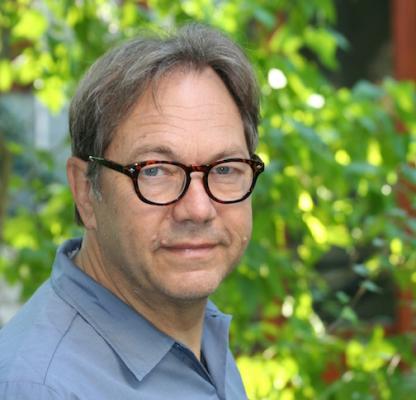How can we explain the (cultural) evolution of language?
Luc Steels, ICREA Research Professor, Institut de Biologia Evolutiva (UPF-CSIC) Barcelona
Matrix is located on the 8th floor of Barrows Hall, on the UC Berkeley campus, near Telegraph and Bancroft Avenues, just up the hill from Sather Gate. There are entrances at both ends of the building, but only one of the elevators on the eastern side goes directly to the 8th floor. You can alternatively take the stairs to the 7th floor and walk up the stairs.

The origins and evolution of language remain one of the biggest unsolved puzzles in science. There is not even a consensus on what counts as an explanation. In this presentation, Luc Steels, ICREA Research Professor at the Institute for Evolutionary Biology will discuss one possible explanatory framework inspired by ideas from evolutionary biology, sociology, and computer science, and he will present various experimental simulations instantiating this framework.
Abstract
My starting point is that language has recruited available cognitive and physiological capacities in the service of language and that therefore the principle force in language evolution is cultural rather than genetic. The question is then how this cultural evolution has been able to lead to such an extraordinarily complex system and how we can study it.
Evolutionary Biology studies how a species A could change into a species A' which has features and functionalities not found in A, for example from salamanders without lungs to salamanders with lungs. Evolutionary Linguistics should do the same, explaining how a language L can gain more functionality or additional syntactic devices, such as color terms case grammar, recursion, spatial language, etc.
We can certainly be inspired by historically observed grammaticalization phenomena in specific languages and we can try to emulate those, but we obviously also need to find the generic processes that underly linguistic change and innovation.
Sociology studies how macroscopic social phenomena (for example spatial segregation of subgroups in cities) can be explained in terms of the microscopic behaviors of individuals. Nowadays the field increasingly uses simulations based on agent-based models, pioneered in Shelling's segregation model, a.o. We can do the same for language evolution. Computer science, in particular artificial intelligence, makes it possible to model the cognitive architecture and linguistic processing needed to simulate language interactions between agents and to operationalize the strategies by which agents invent and learn linguistic conventions from each other.
As I will show, we now have significant interesting examples how this kind of agent-based modeling approach can explain how a language may gain (or lose) some of its features. I will discuss results both for lexical domains, such as for color, spatial terms, or movement categories, and for grammar, such as phrase structure and agreement. Many open problems remain but at least there is a clear framework in which technical work can proceed.
Reference Papers
Steels, L. (2016) Human language is a culturally evolving system. Psychonomic Bulletin and Review 23(4).
Steels, L (2015) The Talking Heads Experiment. The Origins of Words and Meanings. Language Science Press, Berlin.
Biography
Luc Steels studied linguistics at the University of Antwerp (Belgium) and computer science at the Massachusetts Institute of Technology (USA). His main research field is Artificial Intelligence covering a wide range of intelligent abilities, including vision, robotic behavior, conceptual representations and language. In 1983 he became a professor of computer science at the University of Brussels (VUB) and in 1996 he founded the Sony Computer Science Laboratory in Paris and became its first director. Currently he is ICREA Research Professor at the Institute for Evolutionary Biology (CSIC,UPF). Steels has been PI in a dozen large-scale European projects and more than 30 PhD theses have been granted under his direction. He has produced over 200 articles and edited 15 books directly related to his research.



